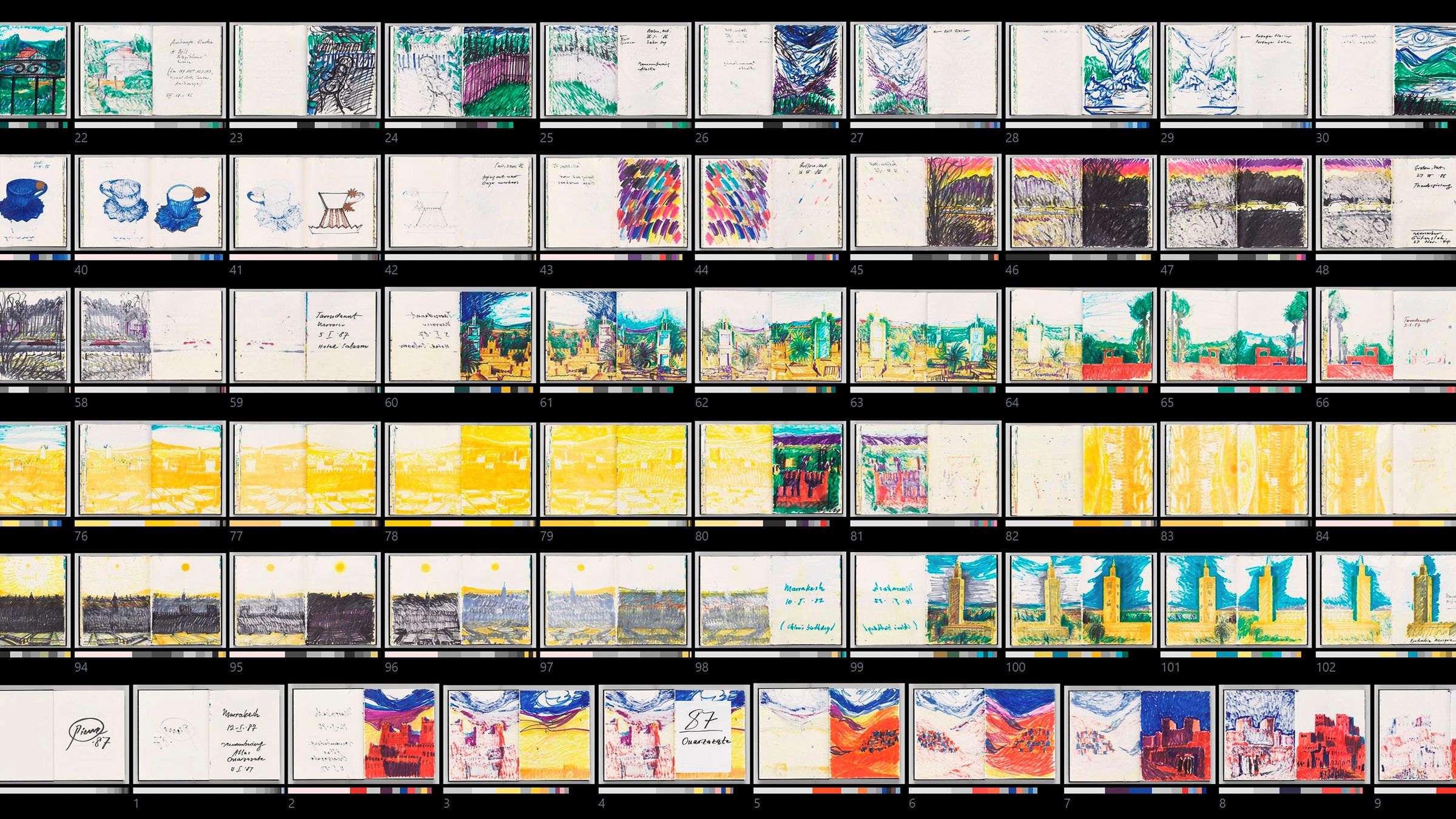Processing the Page
Computer Vision and Otto Piene’s Sketchbooks
Processing the Page shows how curatorial practice coupled with computer science and data visualization can expose hidden stories, spawn new conversations, and transform our understanding of the artistic practice of pioneering multimedia and technology-based artist Otto Piene.- Time
- Location
- Cambridge, USA

The Busch-Reisinger Museum was recently gifted more than 70 sketchbooks kept by artist Otto Piene (1928–2014). Dating from 1935 to 2014, the largely unpublished sketchbooks reflect interdisciplinary, cross-media experiments from Piene’s long career in the Boston area and abroad, including both realized and unrealized projects. A pioneer in multimedia and technology-based art, Piene was long interested in optical perception and kinetic forces, resulting in a body of work that emphasizes collaboration and the intersections of art, science, and nature. The diverse themes and approaches in Piene’s sketchbooks open pathways into his individual artistic practice as well as into the multivalent nature of the sketchbook: an art object, a portable studio, a record of visual thinking, and a space for material experimentation. “[M]any ideas have sprung up in full flight during the physical act of making things,” Piene once remarked. “To a large extent, art comes out of the practice of art.”
While researching, cataloging, and digitizing the sketchbooks—over 9,000 pages—Jeff Steward, the museums’ director of digital infrastructure and emerging technology, and Lauren Hanson, the Stefan Engelhorn Curatorial Fellow in the Busch-Reisinger Museum, teamed up to show how curatorial practice coupled with computer science and data visualization can expose hidden stories, spawn new conversations, and transform our understanding of Piene’s artistic practice. This installation brings to light their experimentation with human and AI-generated data.


